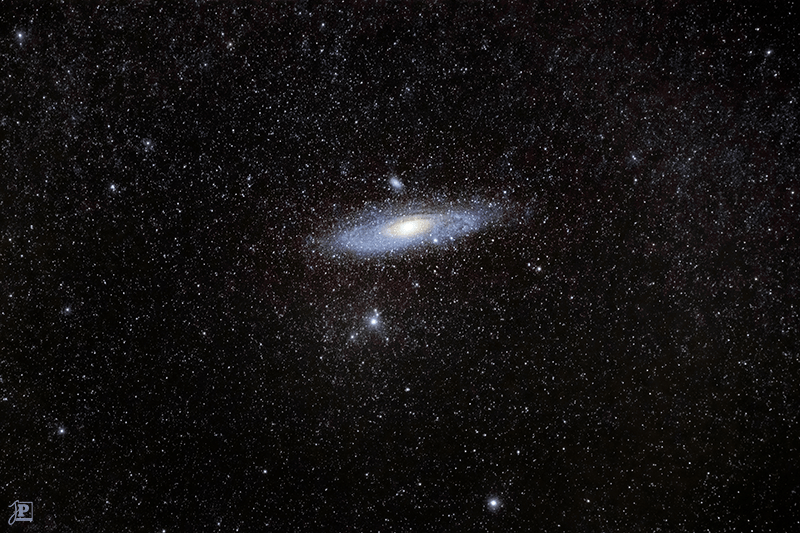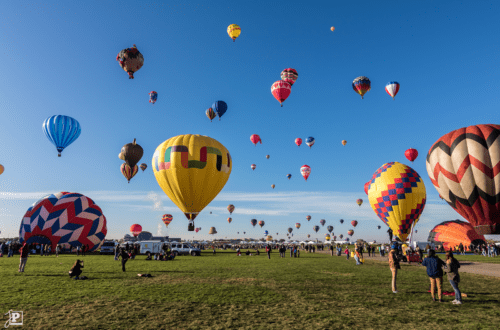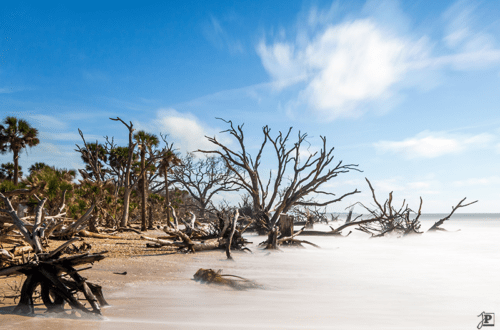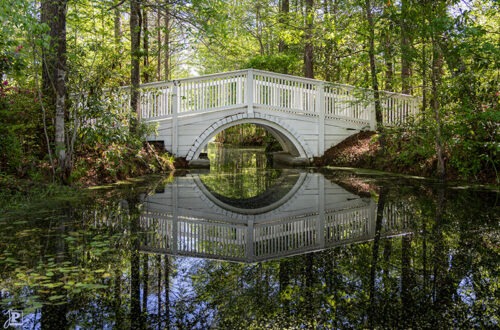Andromeda Galaxy
Since we moved in summer, the low light pollution and the clear air in the Odenwald region grant us a fantastic starry sky literally in our backyard. So, now it’s time to take advantage of this and reach for the stars with a telephoto lens; more precisely: the Andromeda Galaxy.
Photographing the Night Sky
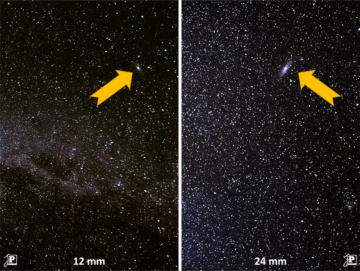
When the trip to New Mexico came up in 2015, in addition to the Albuquerque Balloon Fiesta, the opportunity to photograph the unique night sky there was the main reason for me to buy a new camera and get serious about photography. I had bought a fast ultra-wide angle lens specifically for this purpose, and borrowed another one. In fact, the stargazing trip was an unforgettable experience at the time. A new moon and the dry air at the edge of the desert, high up in the mountains, provided the perfect conditions.
I had watched many YouTube tutorials beforehand and had tried a little at home. So I came back with a lot of pictures that still needed to be post-processed. Considering these were my first attempts in this direction, I was quite happy with the results, especially with a Milky Way panorama. But then I discovered a smudge on the image that looked like a blurred star. At first I thought it was a speck or fingerprint on the lens. But then I discovered the same “smudge” again on a second picture taken with the second lens. So there had to be another explanation.
Fortunately, I still knew the approximate direction in which I had taken the pictures, because I had oriented myself using the constellation Cassiopeia. And a little research quickly revealed: this was indeed not a smudge, but the Andromeda Galaxy! It totally overwhelmed me at that moment, that one can already see a galaxy with such simple means as a not even very expensive camera and a wide angle lens.
The Andromeda Galaxy
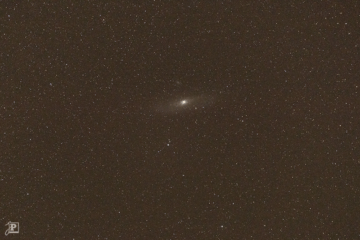
Since then, I had planned to repeat and improve on this. However, the light pollution in the Rhine-Main area made such a thing almost impossible. Moreover, it did take quite a while until I had a suitable lens at hand. Since we live in the Odenwald, the topic of night sky photography has come to my attention again. Now I no longer need to drive for hours to find a dark place – walking out the front door is quite enough. On the night of Halloween, the time had come: clear, moonless night sky without fog or clouds. So I grabbed my camera, a fast telephoto lens, the tripod, and set up camp out on the terrace.
With the help of a stargazing app on the iPhone, it took only a few minutes until I had found the Andromeda galaxy and positioned it approximately in the center of the image. The most difficult part, as always, was getting the focus right. I shot several test photos and then looked at them directly on the big computer screen, to check the sharpness and settings. Since I can’t expose longer than 2.5 seconds at 100 mm focal length on my camera, because otherwise the stars become streaks due to the Earth’s rotation, I had to raise the ISO to 1,600 to capture enough light, despite an aperture ƒ/1.8. Probably ISO 3,200 would have been even better. To get rid of the resulting image noise afterwards, I took a series of 24 photos.
The images look relatively underwhelming at first, so some post-processing is required. The most tedious process here is to manually align the 24 individual photos exactly on top of each other in Photoshop. Since the auto-alignment fails here, only the layer blending mode “difference”, the freeform transformation tool and a lot of patience can help. Once that’s done, it’s time to work on contrasts, details and colors. I used the process described in the YouTube video “Photographing and Processing the Constellation Orion: Image Stacking and LRGB Processing” by Ian Norman. Editing the colors always comes with some artistic freedom, but I tried to orient myself on popular images of the Andromeda galaxy. All in all, I needed about four hours for the finished image.
The Result
I am very satisfied with my first “deep sky” photo, and more will certainly follow. The Orion Nebula, which is the subject of the tutorial linked above, is also on my list. Until then, this image will most likely become the cover image for my 2022 calendar.
